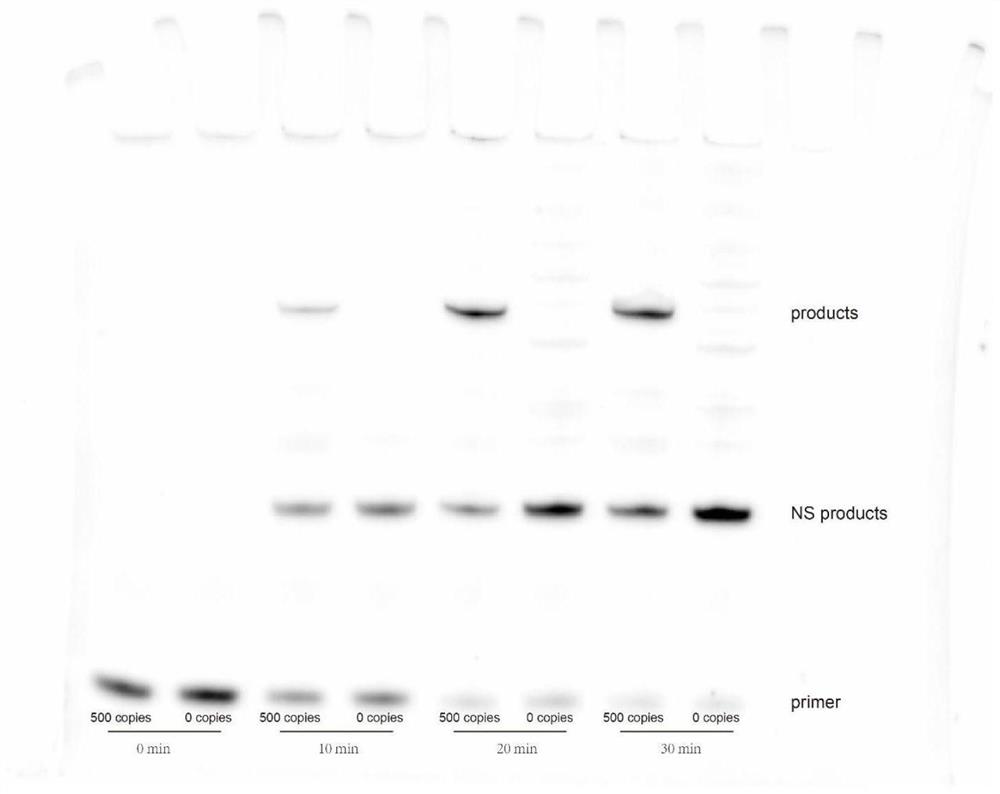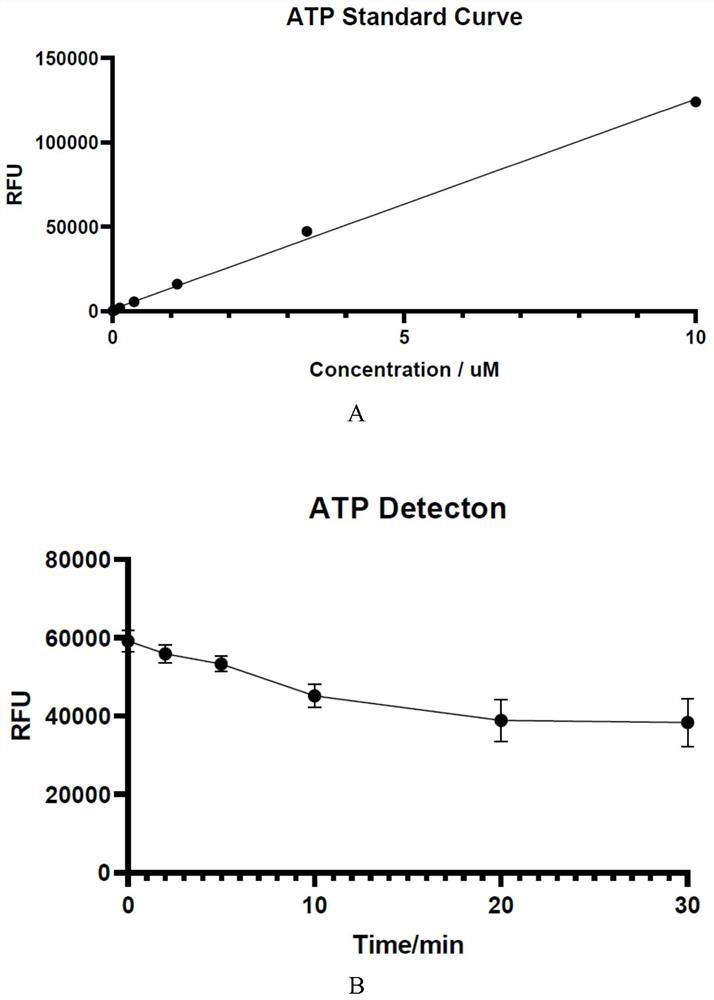Nested recombinase-polymerase amplification method and application thereof
A recombinase and polymerase technology, applied in biochemical equipment and methods, microbial determination/inspection, etc., can solve the problems of increasing the risk of product diffusion pollution, the need to improve the sensitivity and stability, and increasing the operation time and difficulty, etc. Achieve the effect of ensuring primer concentration level, reducing primer concentration consumption, and reducing operational complexity
- Summary
- Abstract
- Description
- Claims
- Application Information
AI Technical Summary
Problems solved by technology
Method used
Image
Examples
Embodiment 1
[0057] Embodiment 1 studies the change of effective primer concentration in the RPA reaction process
[0058] 1. Preparation of reagents and instruments
[0059] SARS-Cov2 virus RNA samples were purchased from national standard materials (standard material number: GBW(E)091099.
[0060] The RPA reaction kit was purchased from TwistDX Company in the UK, and the product model was Twist Basic RT kit
[0061] 2X RNA loading dye was purchased from Thermo Fisher, the product number is R0641
[0062] SYBR gold dye was purchased from thermo fisher company, the product number is S11494
[0063] Multifunctional fluorescence imager, model: Typhoon FLA9500
[0064] 2. Experimental steps
[0065] 1) Dilute the RNA of the new coronavirus to 500copies / ul according to the concentration of the E gene.
[0066] 2) Dilute the new coronavirus E gene primer to 10Um with DEPC water. The primer sequences are as follows:
[0067] E-Primer F: TTCTTTTTCTTGCTTTCGTGGTATTCTTGC (SEQ ID NO: 3)
[...
Embodiment 2
[0084] ATP concentration change in the research RPA reaction process of embodiment 2
[0085] 1. Preparation of reagents and instruments
[0086] SARS-Cov2 virus RNA samples were purchased from national standard materials (standard material number: GBW(E)091099.
[0087] The RPA reaction kit was purchased from TwistDX Company in the UK, and the product model was Twist Basic RT kit
[0088] Enhanced ATP detection kit was purchased from Biyuntian Biotechnology Co., Ltd., item number: S0027
[0089] Multifunctional microplate reader, model: TECAN spark
[0090] 2. Experimental steps:
[0091] 1) Dilute the RNA of the new coronavirus to 500copies / ul according to the concentration of the E gene.
[0092] 2) Dilute the new coronavirus E gene primer to 10uM with DEPC water.
[0093] The primer sequences are as follows:
[0094] E-Primer F:
[0095] TTCTTTTTCTTGCTTTCGTGGTATTCTTGC (SEQ ID NO: 3)
[0096] E-Primer:
[0097] TAMRA-AGAATTCAGATTTTTAACACGAGAGTAAACGT (SEQ ID NO: 4) ...
Embodiment 3
[0115] Example 3 Study on the effect of adding two pairs of primers in the middle of the RPA reaction on the amplification efficiency
[0116] 1. Preparation of reagents and instruments
[0117] The SARS-Cov2 virus RNA sample was purchased from the national standard material (standard material number: GBW(E) 091099. The RPA reaction kit was purchased from the TwistDX company in the UK, and the product model was Twist Basic RT kit colloidal gold test strips were purchased from Beijing Kuer Technology Co., Ltd.
[0118] 2. Experimental steps
[0119] 1) Dilute the RNA of the new coronavirus to 10copies / ul according to the concentration of the E gene.
[0120] 2) Dilute the new coronavirus E gene primer to 10uM with DEPC water. The primer sequences are as follows:
[0121] E-Primer F: ATGTACTCATTCGTTTCGGAAGAGACAGG (SEQ ID NO: 1)
[0122] E-primer R: AGACCAGAAGATCAGGAACTCTAGAAGAA (SEQ ID NO: 2)
[0123] E-2 nd primer F: TTCTTTTTCTTGCTTTCGTGGTATTCTTGC (SEQ ID NO: 3)
[012...
PUM
 Login to View More
Login to View More Abstract
Description
Claims
Application Information
 Login to View More
Login to View More - R&D
- Intellectual Property
- Life Sciences
- Materials
- Tech Scout
- Unparalleled Data Quality
- Higher Quality Content
- 60% Fewer Hallucinations
Browse by: Latest US Patents, China's latest patents, Technical Efficacy Thesaurus, Application Domain, Technology Topic, Popular Technical Reports.
© 2025 PatSnap. All rights reserved.Legal|Privacy policy|Modern Slavery Act Transparency Statement|Sitemap|About US| Contact US: help@patsnap.com



